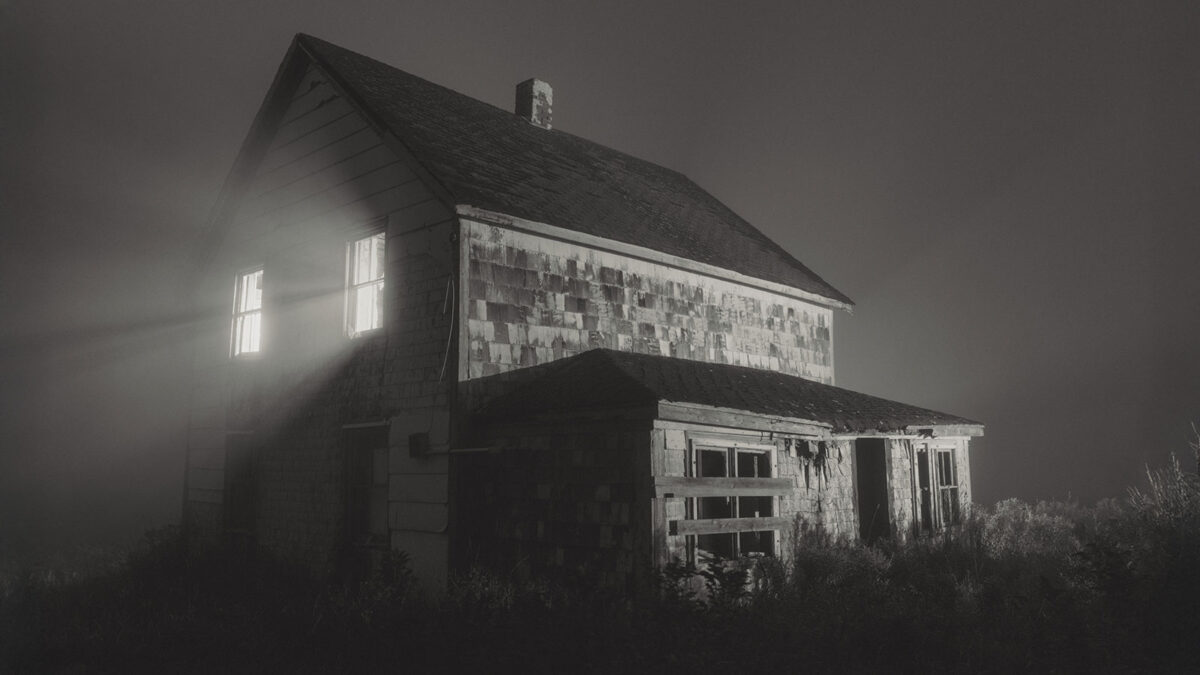
House of Mysteries
A Racially Tinged Murder in 1910 Denver
March 2025
Download This Article (.pdf)
On Friday, May 6, 1910, Catherine Wilson moved to Denver. Her husband, Ridgley Wilson, remained behind in Hot Springs, Arkansas. He planned to join her in a few short days at their new home located at 1054 Clayton Street. Catherine spent her first night in Denver at her daughter Mabel Galland’s house. She departed the next morning to return to her new home on Clayton Street.
On Saturday afternoon, Catherine met a woman named Hazel Miller and invited her to stay at the new home with her that night. But when Miller arrived at 1054 Clayton that evening, as they had arranged, she found the house locked. Miller went around to the back of the house and entered it by raising a window, but she found no one at home. After waiting for over an hour, she left around 8:30 p.m.
On Sunday, Ridgley Wilson, who was by then traveling from Hot Springs to Denver, telegraphed Galland, his stepdaughter, asking her to let Catherine know he would be arriving around 12:15 Monday afternoon. Galland took the telegram to the Clayton Street house that afternoon. Finding the house locked and no one at home, she left the telegram sticking in the door.
Later that day, Miller encountered Galland. Miller told her about her experience at the empty house on Saturday evening. The two women realized that neither of them had seen Catherine since Saturday afternoon.
On Monday, Galland met Ridgley at the train station and told him Catherine was missing. The two went to the house and found it locked. They entered the home and began a search for Catherine.
A Gruesome Discovery
The pair eventually made their way down to the basement. There, they noticed a box with the tip of a woman’s shoe protruding from it. They moved some debris and uncovered Catherine’s body. It had been shoved into the box and covered with “excelsior, straw, and another box.”1
Catherine’s throat was bound with a muslin cloth, indicating she had been strangled. Her head and chest were marked by bruises and cuts, including an odd pattern of marks carved into her forehead. (The press initially sensationalized the marks as a “mystic symbol” and theorized that Catherine may have been murdered as part of a cult ritual.2 A more likely explanation, however, was that the killer attempted to stab her to death but was unable to do so and then resorted to strangulation.)
It appeared Catherine had been cleaning her new house when she was killed. She was clad in a kimono with rolled up sleeves.
There were blood stains in the kitchen and on the stairs leading down to the basement. The killer had attempted to wipe up the blood stains but had left the bloody rags in the sink. In addition, “a three-pound Indian club, stained with blood, was found behind the retaining wall in the cellar.”3 All in all, the killer had left behind a disorganized crime scene, suggesting an unplanned killing followed by panicked and ineffectual attempts at concealment.
Mitsunaga Becomes a Suspect
The hunt for a suspect quickly led police to Gankyo Mitsunaga, an employee of a Japanese-run cleaning service located at 1148 Broadway.4 Catherine had hired the service to help her clean her new home to ready it for occupancy. Mitsunaga, who weighed only 120 pounds to Catherine’s “robust” 160,5 was a strong man, but his left arm had been injured a decade earlier. All in all, he seemed an unlikely suspect for such a physically violent crime, but significant circumstantial evidence pointed to his involvement in the murder.
Evidence later showed that Mitsunaga had been cleaning carpets on York Street on the morning of Saturday, May 7, when he received a call from the cleaning service instructing him to report to 1054 Clayton to work that afternoon. He arrived at the house at around 1:30 p.m. After he finished his work and left the house, he went to the cleaning service and attempted to blot his name out of the ledger that showed he had been dispatched to 1054 Clayton. Then, he disappeared.
The Hunt for Mitsunaga
Over the next couple of weeks, there were several purported sightings of the fugitive. But none led police to the real Mitsunaga.
The first case of mistaken identity was reported on May 17 by the Rocky Mountain News. According to the paper, Cripple Creek police had arrested a Japanese man going by the name of “K. Joshigu,” who matched Mitsunaga’s description.6 The suspect reportedly had two gold teeth, was carrying pistol cartridges but no revolver, and was accompanied by a Caucasian woman who gave her name as “May.”7 The authorities regarded the man’s actions as “mysterious.”8 Although the police doubted that the man was Mitsunaga, the article stated they were holding him for investigation on the suspicion that he “might be wanted somewhere on some other charge.”9
Another dubious sighting occurred two days later, on May 19.10 A man named Estes Osborn claimed he was driving his car about 10 or 12 miles west of Loveland when he saw a Japanese man walking slowly down the road. Osborn had heard of the Wilson murder, and he wondered whether the pedestrian might have been involved in it. He persuaded the man to get in his car. Osborn intended to take the man to a nearby hotel and call the police. But before he could reach the hotel, the man guessed Osborn’s intent, managed to escape the car, and fled into the hills. Osborn stated, improbably, that the man’s hands were bloody—nearly two weeks after the murder.
The Funeral
On May 16, Catherine was buried in Denver’s Fairmount Cemetery. Reverend Frederick Kramer performed a “simple ceremony” for her, remarking that “under the circumstances of the case words were not adequate.”11 Nearly 200 people attended the ceremony, including Ridgley, whose face was “blanched and drawn from a week of mental torture” and was nearly a “nervous wreck,” and Galland, who “sank to the floor in a swoon” when Catherine’s casket was placed in the hearse.12
Mitsunaga Is Apprehended
Mitsunaga was eventually found and arrested in McCook, Nebraska, after a Denver teacher who had traveled to McCook to work at a Japanese school recognized him.13 He had adopted a disguise and was working there under an assumed name.
After his arrest, Mitsunaga gave the police two conflicting statements. In the first, he said he had not done any work at 1054 Clayton. He had gone there, but the woman who came to the door told him she wanted “a Jap[anese] to come in the morning, and not in the afternoon,”14 so he left and went back to the cleaning service.15 He then borrowed some money for a ticket and caught a train to McCook with a dozen other Japanese men.
In his second statement, Mitsunaga told police he worked at 1054 Clayton cleaning the windows, then assisted a man in putting Catherine’s dead body into a box. The man gave him some money, which he used to purchase his train ticket to McCook. He claimed he did not know the other Japanese men whom he traveled with until he met them at the station.
Both statements were read to the jury at Mitsunaga’s trial.
The Trial
Mitsunaga was tried for murder. Racism tainted the news coverage. Newspaper headlines and stories routinely referred to Mitsunaga and other Japanese using the diminutive term “Jap” and emphasized the help he received from the Japanese community. Interviewees, including Mitsunaga’s own attorney, referred to Mitsunaga as a “little man” or a “little brown man.”16 The newspaper accounts also featured wildly divergent misspellings of Japanese names. This could indicate unfamiliarity with the Japanese language and the difficulties involved in rendering names into English, but it is also possible the reporters and editors simply did not care whether the foreign-sounding names were correctly spelled. On the other hand, some newspaper stories cast doubt on Mitsunaga’s guilt and reported favorably or at least neutrally on his attempts to establish his innocence.
Mitsunaga’s trial testimony was shocking. He said he was dispatched to 1054 Clayton, where he met Catherine and agreed to clean her home’s windows and bathroom. He cleaned the windows and then went to work in the bathroom. Catherine was working elsewhere in the house, but they occasionally conversed with each other at a distance.
Suddenly, a tall stranger entered the bathroom where Mitsunaga was working. The stranger’s face was scratched and bleeding, and his shirt was covered with blood. He held a revolver in his right hand. He grabbed Mitsunaga with his left hand and forced him to descend to the basement. At the bottom of the stairs, Mitsunaga saw Catherine’s dead body. Though she was already dead, the stranger put a cloth around Catherine’s neck, stood on one end of it, and pulled the other end with his right hand until it was tight. He then forced Mitsunaga at gunpoint to help him put the body in a box and then wipe up the blood stains with rags.
The stranger then took Mitsunaga to the front door, handed him $30, and pushed him out the door. Mitsunaga testified that after he was expelled from the house, he made his way to the cleaning service, changed his clothes, ate dinner, and went downtown, where he told his story to another Japanese man he encountered. The man told him this was a serious matter. Frightened, Mitsunaga went back to the cleaning service and erased his name from the account book that showed him at 1054 Clayton. He then bought a ticket with some of the money the man gave him and went to McCook.
The jury, apparently unconvinced by Mitsunaga’s story, convicted him of first-degree murder. The court sentenced him to life imprisonment.
Newly Discovered Evidence?
Mitsunaga appealed to the Colorado Supreme Court. Newspaper accounts indicate that in connection with his appeal he asked the court to grant him a new trial based on newly discovered evidence. But the supreme court’s January 1913 decision does not discuss any new evidence or a motion for a new trial. Rather, it notes that Mitsunaga had made no objection on appeal that the evidence was insufficient to support the jury’s verdict.17
In any event, in developing his alleged new evidence, Mitsunaga had found help from an unusual source. In December 1912, Colorado newspapers reported that “Tarro Yogata,”18 the “Sherlock Holmes of Japan,” had come to America to uncover evidence that would establish Mitsunaga’s innocence.19 In his search for clues, the detective reportedly donned a wide variety of disguises. He posed as “a window washer, [a] vegetable vendor, a house-to-house canvasser selling a patented washing machine, a book agent, a jewelry salesman, a cook [and] a waiter.”20 By dint of these undercover roles, Mitsunaga’s defense team claimed, the sleuth had uncovered significant exculpatory evidence.
It is unclear, however, what the new evidence consisted of. The defense team did mention one intriguing clue they had uncovered. In a secret drawer in Catherine’s bedroom, they reportedly found her glasses, which had been broken in half during her scuffle with the murderer.21 The defense team argued it was unlikely Mitsunaga knew of the secret drawer’s existence. This being the case, the argument went, he could not have been the one who hid the glasses there after the murder. But this “new evidence” apparently went nowhere and did not avail Mitsunaga at all.
The Appeal
The Colorado Supreme Court addressed several issues on appeal. Some of them were technical. It rejected Mitsunaga’s challenge to the jury array, holding that the jurors could be selected by either being drawn from a box or through an open venire. It held that the prosecution’s description of Mitsunaga’s confessions in its opening statement—before the admissibility of the confessions had been determined—was harmless because the court had later admitted the confessions. The court also stated there was no basis for instructing on manslaughter because the evidence clearly established that Catherine had been murdered.
A more interesting issue arose from Mitsunaga’s attempts to cross-examine Ridgley Wilson. The supreme court opined near the beginning of its opinion that there was “no evidence in the whole record even suggesting the husband had anything to do with the crime.”22 This conclusion clearly colored its resolution, later in the opinion, of the cross-examination issue.
Though Mitsunaga referred to his questions as “impeachment,” they were obviously designed to implicate Ridgley in the murder. He wanted to ask Ridgley whether Catherine had told a woman named Mrs. Faxon that she wanted to change her insurance policy to substitute Galland for Ridgley as a beneficiary, that she expected something to happen to her, that if something did happen to her it would be Ridgley’s fault, and that if something did happen Faxon should look for her and she would be found. He sought to ask whether Ridgley had ever pursued Catherine around the house with a revolver. He wanted to ask whether the two had quarreled frequently. He wanted to inquire about a letter in which Ridgley told Catherine that when she found a house it should be in a location where Ridgley was unknown. Finally, he wanted to ask whether Ridgley had told Galland that he wanted her to keep the identification slip given to her by a Pullman porter, evidently to establish the time he arrived in Denver. The trial court disallowed all these questions.
The supreme court acknowledged that a witness may be impeached by his prior inconsistent statements. But statements that delve into areas on which he has not testified are not a proper subject for impeachment. Nor is it proper to ask impeaching questions on “collateral, irrelevant, or immaterial matters.”23 Even if the out-of-court statements Mitsunaga’s questions would inquire about were true, they did not concern Ridgley’s testimony on direct examination. Had Ridgley denied them, Mitsunaga would not have been permitted to offer evidence to prove them. The trial court therefore properly rejected the questions.
Mitsunaga also claimed that clerical privilege shielded his statements admitted at trial. While in custody, he had been visited by Mr. Shirato, a Japanese Methodist minister. Shirato had told the police chief that Mitsunaga wanted to see him. Mitsunaga then made his first confession to the chief. Later, Shirato again notified the police chief that Mitsunaga wanted to see him again, and he made his second confession to the chief.
The supreme court found no basis for barring these statements. There was no evidence Mitsunaga was a Methodist or that Shirato was his spiritual advisor. Mitsunaga had made his statements voluntarily to the police chief. In addition, Mitsunaga reiterated nearly his entire second confession in his trial testimony, so he had not been prejudiced by admission of the confession.
Mitsunaga’s next issue concerned his clothing, which the proprietor of the cleaning establishment delivered to the police. Mitsunaga attempted to subpoena an officer to produce the clothes, hoping to show the jury that they contained no bloodstains, but the clothes could not be found. The supreme court did not find this prejudicial, because there was no evidence that Mitsunaga had worn the clothes delivered to the police when he was at the Wilson house and in any event, the chief of police had testified they had contained no bloodstains when delivered to the police.
Mitsunaga also challenged an instruction that informed the jury that in assessing his credibility they should consider his interest in the result of the trial. He contended this singled out his testimony for the jury’s critical eye. But the court read the instruction, in connection with another instruction presented in the case, to inform the jury they had no right to disregard Mitsunaga’s testimony just because he was the defendant, but should also consider his interest in the outcome. This instruction, the court held, was not unduly prejudicial.
Finally, Mitsunaga argued the state was bound by those portions of his testimony that the state had introduced in its case in chief, unless they were shown to be untrue. But the supreme court stated it was the jury’s duty to determine, in light of all the evidence, which statements it chose to believe.
Having disposed of all of Mitsunaga’s arguments, the court affirmed his conviction.
Aftermath
Mitsunaga began serving his life sentence in December 1910. He sought a pardon from the Board of Pardons at least twice, in 1915 and 1920, but the Board denied him a pardon each time. He died in prison in 1933 of liver cancer, still proclaiming his innocence through an interpreter.
Antipathy toward Japanese Americans peaked during the Second World War, when 120,000 of them living on the West Coast were taken from their homes and forcibly removed to camps by executive order. Colorado’s governor at the time, Ralph L. Carr, offered refuge to Japanese Americans subject to incarceration. He was the only state governor to do so. Today, a statue in his honor stands in Denver’s Sakura Square.24
Notes
citation Gibbard, “House of Mysteries: A Racially Tinged Murder in 1910 Denver,” 54 Colo. Law. 18 (Mar. 2025), https://cl.cobar.org/departments/house-of-mysteries.
1. Mitsunaga v. People, 129 P. 241, 242 (Colo. 1913). This article uses the court’s spelling of Mitsunaga’s first name (Gankyo), though it seems unlikely this is an accurate rendering of the Japanese name into English characters.
2. “Woman Strangled; Body Jammed in Packing Case in the Cellar of Her Capitol Hill Home,” Rocky Mountain News, p. 1, col. 5 (May 10, 1910).
3. Id.
4. The cleaning service operated as a sort of employment agency for Japanese workers. It “took orders, and filled them by sending others to do the work, collecting a percentage on what they received, as commission.” Mitsunaga, 129 P. at 242. In 1909, a Japanese man named Arthur Takamine had purchased the property at 1148 Broadway, which had previously served as a hotel and a girls’ school, apparently intending for it to serve as a hotel for Japanese immigrants. “Mrs. A.C. Peck Must Vacate Broadway School; Make Room for a Jap[anese] Boarding House,” Rocky Mountain News, p. 7, col. 3 (July 28, 1909). A newspaper article at that time had mourned the loss of the girls’ boarding school that had previously occupied the building, being replaced by “a mild form of the Yellow Peril” that would be “poked under the noses of dwellers in on[e] of the best residence and business districts of the city.” Id. The building apparently served as both a boarding house and a home for businesses run by Takamine variously known as the “Japanese Office and House Cleaning Company” and the “Japanese Employment Bureau.”
5. Mitsunaga, 129 P. at 242.
6. “Jap[anese] Suspect is Arrested by Cripple Creek Police,” Rocky Mountain News, p. 5, col. 5 (May 17, 1910).
7. Id.
8. Id.
9. Id.
10. “Officers on Trail of Jap[anese Man] Suspected of Crime,” Fort Collins Wkly. Courier, p. 6, col. 1 (May 19, 1910).
11. “Body of Murdered Woman Laid at Rest,” Republican-Advoc., p. 1, col. 6 (May 18, 1910).
12. Id.
13. “Suspected Jap[anese Man] Located,” Middle Park Times, p. 3, col. 4 (June 24, 1910).
14. Use of the slur “Jap” has been modified here and elsewhere in the article to a less derogatory form of reference.
15. Mitsunaga, 129 P. at 243.
16. “Evidence of Jap[anese] Detective Expected to Free Mitsunaga,” Rocky Mountain News, p. 3, col. 4 (Dec. 4, 1912) (quoting his attorney O.N. Hilton as saying that if a new trial were granted, the jury would “quickly see the injustice done the little brown man.”).
17. Mitsunaga, 129 P. at 243.
18. The name is surely misrendered. Google’s AI reports that “Yogata” is not a proper Japanese name, though “Taro” in Japanese is a name meaning “first-born son.”
19. “Evidence of Jap[anese] Detective Expected to Free Mitsunaga,” supra note 17.
20. Id.
21. Id.
22. Mitsunaga, 129 P. at 243.
23. Id. at 244.
24. See https://sakurasquare.com/about.


